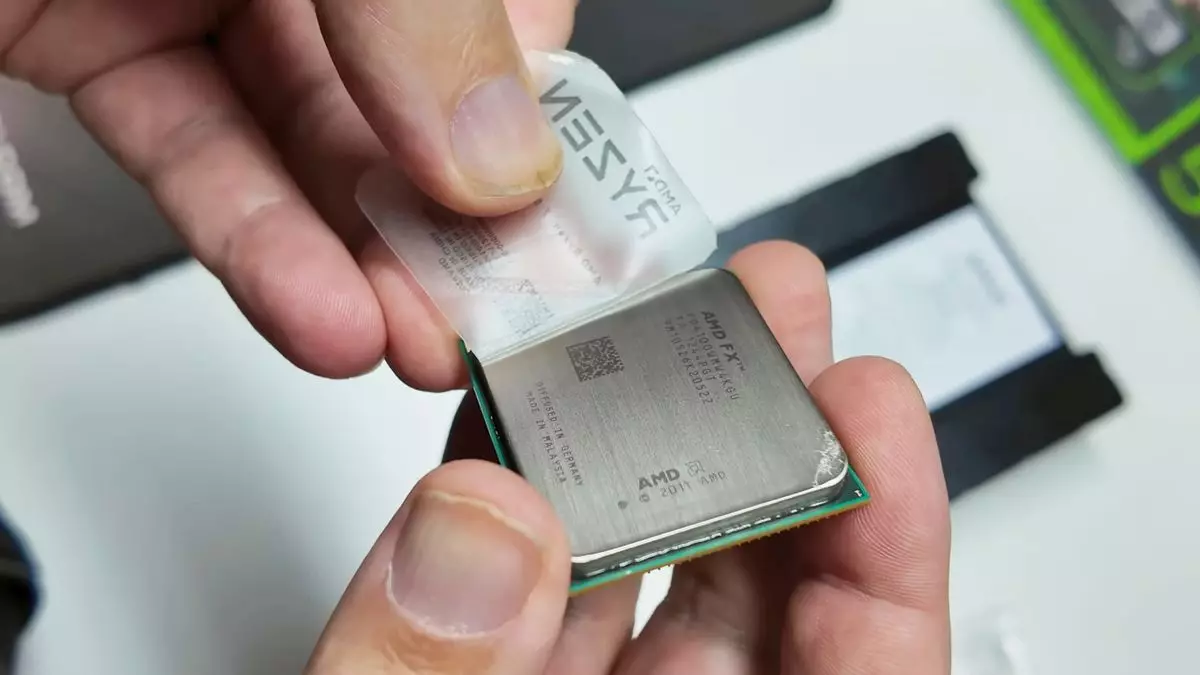In the fast-paced realm of technology and gaming, misinformation and deception can come in unexpected forms. A recent exposé by the YouTube channel Hardware Busters unveiled a disheartening case of fraudulent practices surrounding the sale of computer processors online. They procured what was alleged to be an AMD Ryzen 7 9800X3D CPU from Amazon, only to make a jaw-dropping discovery upon opening the package: it was a cleverly faked component topped with a mere sticker that masqueraded as a high-end processor. The implications of such incidents go beyond mere consumer disappointment; they prompt essential questions regarding the integrity of digital marketplaces and the precautions consumers must take when purchasing computer hardware online.
The Anatomy of a Deceptive Deal
The story first unfolded when Hardware Busters noticed discrepancies in the packaging and build of the processor. Instead of the anticipated socket and heatspreader design for an AM5 chip, they found a startlingly different product—the AMD FX 4100, a vintage model from over a decade ago, touted for its budget specifications and significantly less performance. It became evident that an unscrupulous individual had exploited the return policy by swapping out the legitimate high-performance CPU for a low-end one, merely slapped with a sticker bearing the Ryzen branding.
The incident serves as a prime illustration of how, in today’s dynamic e-commerce environment, the curtain can very easily be pulled over consumers’ eyes. Such deception might leave less technically-inclined buyers ill-equipped to identify the fraud, ultimately leading to substantial financial losses.
The Implications of eCommerce Fraud
While one might assume that established platforms like Amazon would have robust measures in place to prevent such occurrences, this incident reveals significant gaps in consumer protection. Technicians or employees tasked with processing returns often lack the expertise necessary to identify counterfeit products effectively. With the increasing prevalence of high-tech equipment and components, the opportunity for exploitation has burgeoned, and this could ultimately tarnish trust in e-commerce.
This fraud has broader implications for the entire tech industry, particularly for gaming enthusiasts eager to build the latest rig. As new generations of processors become accessible to a wider range of consumers, the stakes rise, and so does the risk of imitation products infiltrating the market. If consumers begin to lose confidence in the integrity of their purchases, the ramifications could lead to a sluggish market, hindering the growth and enthusiasm that surround new technological innovations.
Consumer Vigilance: A Necessity, Not an Option
The shocking nature of this incident should act as a wake-up call for anyone involved in tech purchasing. It is crucial that consumers take proactive steps to ensure that the hardware they receive matches their expectations. Upon receiving any electronic device, opening the box and gently inspecting the contents should be standard practice. This means not just glancing at the surface but also verifying the item’s specifications via recognized diagnostic tools like CPU-Z or HWInfo.
Notably, this vigilance is particularly important for graphics cards, where mismatching branding and specifications could easily go unnoticed by less informed buyers. The risks are particularly pronounced in a climate where online sales flourish, and even reputable vendors can fall victim to substandard return protocols. By remaining alert and informed, consumers can safeguard themselves against fraudulent schemes.
A Call for Accountability
One glaring question arises: Who invests time and resources into creating counterfeit products and sophisticated marketing techniques when they are so determinately harmful to both consumers and reputable sellers? The answer may lie in a broader recognition of consumer ignorance and the sad reality that not all buyers are equipped to discern the fraudulent from the genuine. It calls for a greater sense of accountability from manufacturers, retailers, and consumers alike in the technology market.
The budding tech market necessitates vigilance, education, and a collective stand against deception. As enthusiasts, retailers, and consumers come together to expose and dismantle these fraudulent practices, we can foster a safer and more honest environment for technological advancement. While this story might be relegated to a cautionary tale today, it serves as a powerful reminder of the responsibility we all share in maintaining the integrity of our digital and tech-driven society.

